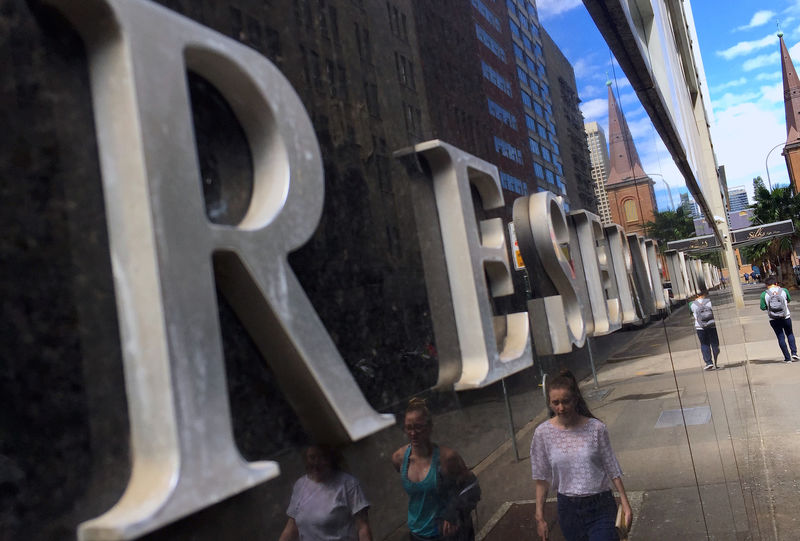(Repeats to add subscribers)
* RBA holds rates at 1.5 pct as widely expected
* Says slower GDP growth temporary, sees pick up to 3 pct
* Market implies modest chance of another cut later in year
By Wayne Cole
SYDNEY, Feb 7 (Reuters) - Australia's central bank held rates steady at its first policy meeting of the year on Tuesday, playing down a recent soft patch in economic growth as a temporary hiccup that would not prevent a pick up to a healthy 3-percent pace over time.
The Reserve Bank of Australia's (RBA) optimistic tone lifted the local currency 20 ticks to $0.7662 AUD=D4 as markets widened the odds on another policy easing.
The central bank kept rates at a record low of 1.5 percent for a seventh straight month, following easings in August and May last year. All 72 economists in a Reuters poll expected a steady outcome this week.
Notably, Governor Philip Lowe said the economy looked to have bounced back to "reasonable growth" after a surprise contraction in the third quarter of last year.
"The Bank's central scenario remains for economic growth to be around 3 percent over the next couple of years," Lowe said, waving aside fears Australia may have slipped into its first recession in 25 years.
He also reiterated the bank's forecasts for a gradual pick up in underlying inflation, which is currently pinned at a record low of 1.5 percent.
The RBA will release its latest forecasts for the economy in a quarterly policy statement due on Friday.
With Lowe accentuating the positive, investors trimmed bets on another rate cut for the near term with interbank futures 0#YIB: implying around a 16 percent of a move by June.
HOT HOUSING
Lowe again noted that prices for Australia's key commodity exports had risen sharply in past months, which blessed the country with its largest trade surplus on record in December.
Analysts expect that windfall to percolate through profits, wages and tax receipts in a boon for nominal growth and an argument against further rate cuts.
Adding to the case against stimulus has been an acceleration in house prices in Australia's two largest cities, Sydney and Melbourne, driven by an unwelcome revival in borrowing for investment properties.
Home prices rose at an annual pace of 10.7 percent in January, with Sydney running red-hot at 16 percent, data from property consultant CoreLogic showed last week. of the December RBA meeting showed the board was mindful of balancing the benefits of easy policy against the risks of encouraging a renewed borrowing binge by households, many of which are already heavily in debt.
Lowe has repeatedly argued that cutting rates further could carry risks for debt that outweighed any economic benefit.
